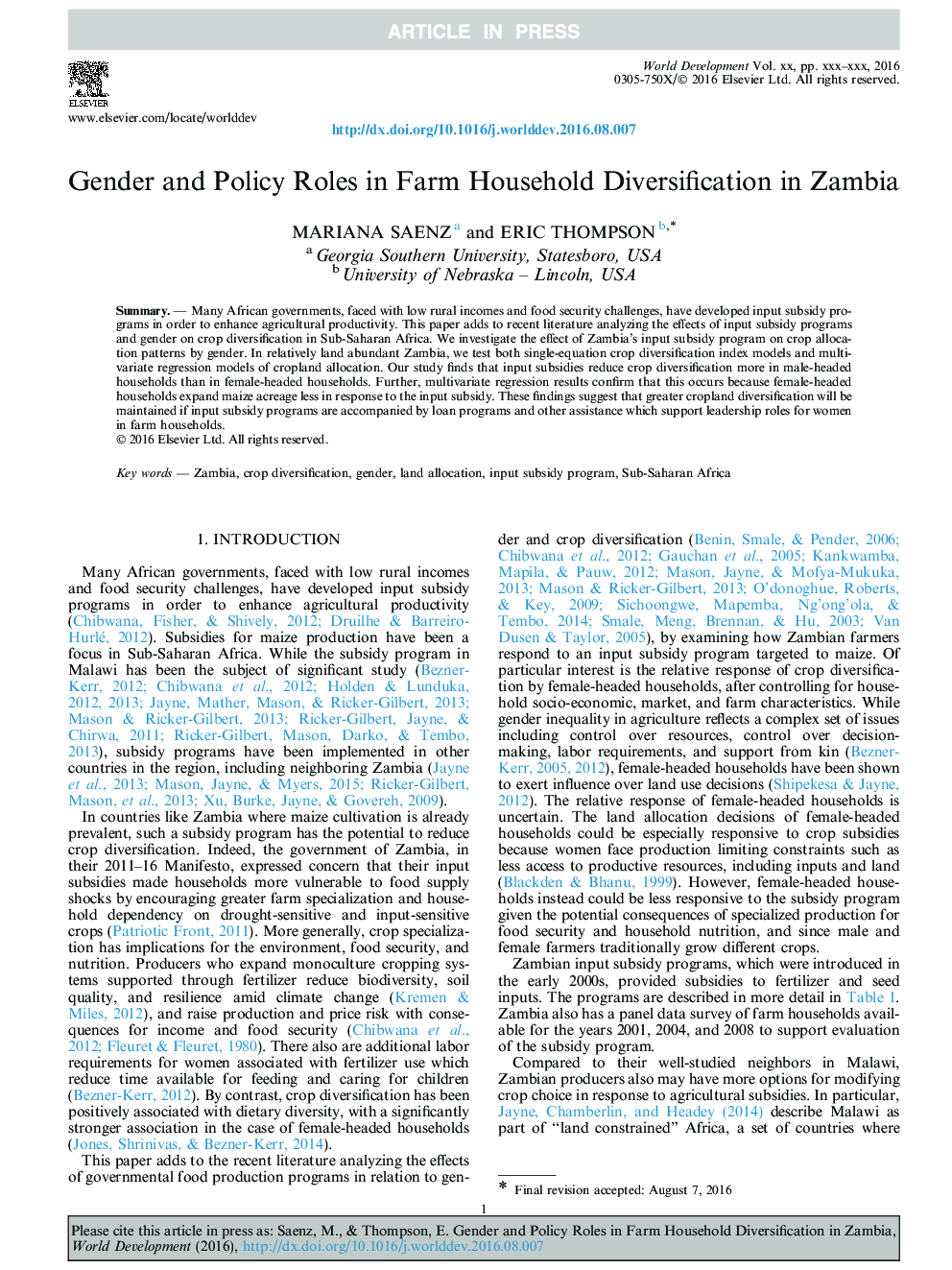| Article ID | Journal | Published Year | Pages | File Type |
|---|---|---|---|---|
| 5105349 | World Development | 2017 | 18 Pages |
Abstract
Many African governments, faced with low rural incomes and food security challenges, have developed input subsidy programs in order to enhance agricultural productivity. This paper adds to recent literature analyzing the effects of input subsidy programs and gender on crop diversification in Sub-Saharan Africa. We investigate the effect of Zambia's input subsidy program on crop allocation patterns by gender. In relatively land abundant Zambia, we test both single-equation crop diversification index models and multivariate regression models of cropland allocation. Our study finds that input subsidies reduce crop diversification more in male-headed households than in female-headed households. Further, multivariate regression results confirm that this occurs because female-headed households expand maize acreage less in response to the input subsidy. These findings suggest that greater cropland diversification will be maintained if input subsidy programs are accompanied by loan programs and other assistance which support leadership roles for women in farm households.
Related Topics
Social Sciences and Humanities
Economics, Econometrics and Finance
Economics and Econometrics
Authors
Mariana Saenz, Eric Thompson,
